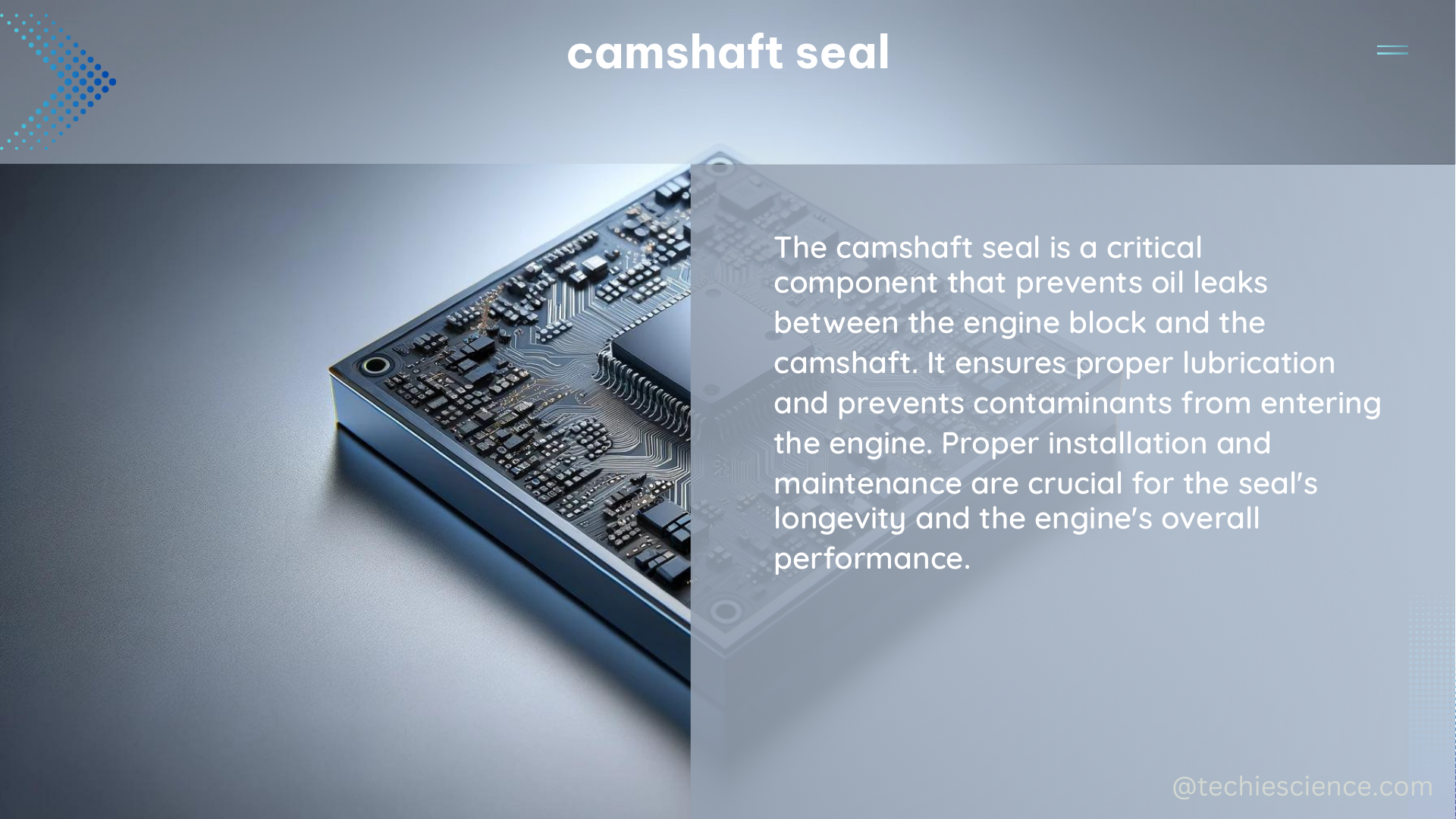The camshaft seal is a critical component in an internal combustion engine, responsible for preventing oil leaks between the camshaft and the cylinder head. Understanding the technical specifications, proper installation, and maintenance of this seal is essential for ensuring the smooth and efficient operation of your engine.
Camshaft Seal Technical Specifications
Material Composition
Camshaft seals are typically made from one of two materials, or a combination of both:
-
Nitrile Rubber: Nitrile rubber, also known as Buna-N, provides excellent oil resistance and is a common choice for camshaft seals. This material can withstand the high temperatures and pressures encountered in the engine environment.
-
Polyacetal: Polyacetal, or POM, is a high-strength, durable plastic material that is often used in camshaft seal construction. Polyacetal seals offer superior mechanical properties and resistance to wear.
Dimensional Characteristics
The dimensions of the camshaft seal are crucial for proper fitment and sealing performance. The key dimensions to consider are:
-
Inner Diameter (ID): The ID of the seal must match the diameter of the camshaft to ensure a tight, leak-free fit. For example, in a 1994 Honda Accord EX (VTEC) engine, the camshaft seal ID is approximately 22.86 mm (0.900 in).
-
Outer Diameter (OD): The OD of the seal must correspond to the bore size in the cylinder head where the seal is installed. In the case of the 1994 Honda Accord EX (VTEC), the camshaft seal OD is around 25.40 mm (1.000 in).
-
Thickness: Camshaft seal thickness typically ranges from 1.5 mm to 3 mm (0.06 in to 0.12 in), depending on the specific engine design and requirements.
Lip Design
The lip design of the camshaft seal is crucial for its sealing performance. A common design is the square-edged lip, which provides a robust and effective seal against the camshaft surface. This design helps to prevent oil leaks and maintain the necessary lubrication for the camshaft.
Spring-Loaded Seals
Some camshaft seals incorporate a small spring inside the inner lip. This spring helps to ensure a tight, consistent seal against the camshaft surface. However, this spring can sometimes pop out during the installation process, leading to potential leaks.
Camshaft Seal DIY Installation and Inspection

Proper installation and regular inspection of the camshaft seal are essential to prevent oil leaks and ensure the longevity of your engine.
Preparing the Surface
Before installing a new camshaft seal, it is crucial to thoroughly clean the camshaft and cylinder head surfaces. Remove any old seal residue or debris to ensure a clean, smooth surface for the new seal to adhere to.
Seal Installation
When installing the new camshaft seal, take care to ensure it sits straight and is not damaged during the process. Applying a small amount of silicone around the lip of the seal can help hold it in place and prevent leaks.
Seal Inspection
If you suspect a leak, you will need to remove the valve cover and upper timing cover to inspect the camshaft seal. Look for signs of improper seating or the potential loss of the small spring inside the inner lip.
Seal Replacement
If the camshaft seal is damaged or not sealing properly, it is best to replace it. Depending on the engine design, you may need to remove the timing belt to access the seal for replacement.
References
- Camshaft Inspection and Maintenance
- Camshaft Seal Discussion on ClubLexus
- Camshaft Seal Discussion on Geo Metro Forum
- Another Camshaft Seal Question on Honda-Tech

The lambdageeks.com Core SME Team is a group of experienced subject matter experts from diverse scientific and technical fields including Physics, Chemistry, Technology,Electronics & Electrical Engineering, Automotive, Mechanical Engineering. Our team collaborates to create high-quality, well-researched articles on a wide range of science and technology topics for the lambdageeks.com website.
All Our Senior SME are having more than 7 Years of experience in the respective fields . They are either Working Industry Professionals or assocaited With different Universities. Refer Our Authors Page to get to know About our Core SMEs.